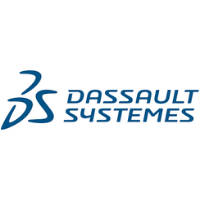
Dassault Systemes
View Brand PublisherKey takeaways from the YourStory-Dassault Systemes’ Executive meeting
How important are computer-aided design (CAD) & product lifecycle management (PLM) technologies today? How have these technologies been affected by the pandemic? What is the future of experiential design and innovation? These pertinent questions were at the forefront of an insightful executive meeting between YourStory Business Editor Vishal Krishna, Olivier Sappin, CEO, CATIA at Dassault Systèmes and Eric Bienvenu, VP, Global Sales & CoE , SIMULIA, Dassault Systèmes.
Here are some of the key takeaways from this discussion.
The pandemic effect
Both the executives stressed on how Dassault Systèmes was fortunate to have experienced the current world of ‘the new normal’ much before the COVID-19 pandemic struck. Oliver said that the company had been working with startups, which gave both the entities an advantage of starting from scratch or ‘a blank sheet of paper with no legacy.’ “Right from the start, we adopted a practice where everyone involved was online and were connected on several platforms and on the cloud. So, when the pandemic happened, they (startups) were able to be flexible and agile in their work-from-home environments,” Olivier said. The pandemic, he said, was set to extend this trend to the entire sector the company works with and in the new normal changes are likely to be accelerated.
Eric highlighted the impact of the healthcare crisis changing product dynamics in the market. Innovations, productivity and criticality of the product was seen in the market, he said, citing the example of the Wuhan Hospital that was built in a matter of a few weeks. That period, he said, gave a very less chance to experiment or have a ‘let’s try this’ attitude and deliver on time.
Changing gears in design processes
While citing the example of the Wuhan Hospital, Eric added that the pandemic also changed the way startups dealt with their products. “Startups came to us and said we must innovate and cannot go through the classical processes of building up, testing and modifying etc. The need is to get it right the first time and the test must be just a confirmation of the model,” Eric said.
The Wuhan example also shed light on the reduced time frame for a product to be launched in the market along with offering an ‘experience’, both Olivier and Eric said. They added that the conversation had shifted from developing just a product or the technology involved behind the product, to how the end-user will be consuming or using it, going forward. “It is not about giving the right shape or checking the aerodynamics or ergonomics. From the first stage of development, people are thinking about the experience,” Olivier said.
Bridging between model and simulation
Among the major transformations visible in the past few years, the executives spoke about how the gap between model and simulation has also reduced with the help of successful products and services such as MODSIM (integrated modelling and simulation). The product offers a linear approach to engineering using one model that starts during the earliest phase of product development. The product offers integrated platforms to virtually model complex shapes and simulate their performance and behaviour, which helps customers understand their products’ experience, explore alternatives and accelerate collaboration and innovation.
Beyond product development
Both Olivier and Eric were quick to point out that startups are increasingly becoming cautious about their product and their impact on global sustainability. “The younger generation is conscious about how their product acts, behaves and are concerned about the way their companies use their resources. Minimum footprint is a concept that will develop in the coming years,” Eric said.
Over and above this, one of the changes observed in the sector is the need to customise it for their customers. “We’ve seen that we need to adapt the solution depending on the companies and the users we serve and not everyone's the same in that aspect,” Olivier said, adding that the company has had to change the structure of its portfolio. “It cannot just be about modelling, simulation or manufacturing. It has to be an industry-centric offering.”
Both the executives also stressed on adoption of virtual or augmented reality experiences in their design offerings.
Community engagement
Speaking about the way startups engage and indulge in buying products or services, Olivier and Eric said social media and community interactions had increased recently and had changed the nature of relationship between Dassault Systemes and its customers. Their community engagement ensures that all the knowledge about the domain, the know-how is passed on to the customers and is capitalised in communities. “Our new idea is about having a single platform with a capacity to model and simulate, which is quite unique in the market. I think that is really fitting quite well with the big challenge of putting innovation quickly on the market,” Olivier said.
Eric went on to highlight how their community focus also is through their champion program. These are companies or people who understand and deliver their product efficiently to the market, he said. “That is the kind of people we want to support, help and motivate to ensure that they will communicate the great things we are doing.”







